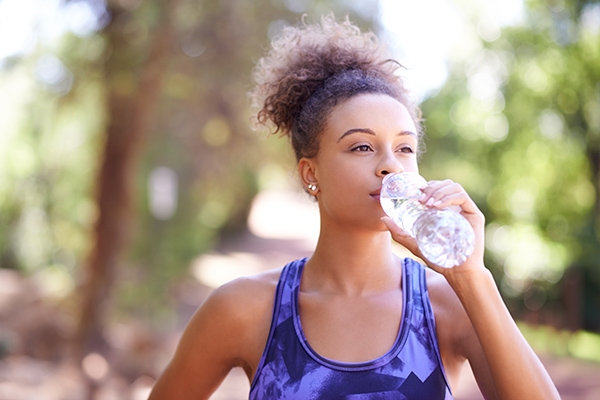Staying Safe in the Heat and Knowing the Warning Signs
Jun 16, 2021

The summer sizzle is on! Temperatures are once again on the rise with another heat wave upon us.
Exposure to too much heat without relief or adequate fluid intake can cause various types of heat-related illness. It’s especially important that children and teenagers stay hydrated because they produce more heat with activity, than adults, and sweat less (sweating is one of the body's cooling mechanisms).
Children and teens with chronic health problems, or who take certain medications, may be more susceptible to heat-related illnesses. Also, those who are overweight or wear heavy clothing during exertion, such as marching band or football uniforms, are more susceptible.
There are three types of heat-related illnesses:
- Heat cramps (the mildest form of heat illness) - consists of painful muscle cramps and spasms that occur during or after intense exercise and sweating in high heat
- Heat exhaustion (more severe than heat cramps) - results from a loss of water and salt in the body and occurs when the body is unable to cool itself properly (not enough fluid). If left untreated, it can progress to heat stroke.
- Heat stroke (most severe form of heat illness) - occurs when the body's heat-regulating system is overwhelmed by excessive heat. It is a life-threatening emergency and requires immediate medical attention.
Read on for the most common symptoms of heat-related illness. Specific treatment will be determined by your child's doctor and may include some, or more, of the following:
Condition: Heat Cramps
Symptoms
- Painful Cramps
- Flushed, moist skin
First-aid and treatment
- Move to a cool place and rest. Do not continue to participate in the activity.
- Remove excess clothing and place cool cloths on skin; fan skin.
- Give cool sports drinks containing salt and sugar.
- Stretch cramped muscles slowly and gently.
Condition: Heat exhaustion
Symptoms
- Muscle cramps
- Pale, moist skin
- Usually has a fever over 100.4° F (or 34° C)
- Nausea
- Vomiting
- Diarrhea
- Headache
- Fatigue
- Weakness
- Anxiety, and faint feeling
First-aid and treatment
- Move to a cool place and rest.
- Remove excess clothing and place cool cloths on skin; fan skin.
- Give cool sports drinks containing salt and sugar.
- If no improvement or unable to take fluids, take your child to an emergency department, immediately. IV (intravenous) fluids may be needed.
Condition: Heat Stroke
Symptoms
- Warm, dry skin
- High fever, usually over 104° F (or 40° C)
- Rapid heart rate
- Loss of appetite
- Nausea
- Vomiting
- Headache
- Fatigue
- Confusion
- Agitation
- Lethargy
- Stupor
- Seizures, coma, and death are possible
First-aid and treatment
- Move to a cool place and rest.
- Call 911 or your local emergency medical service. Heat stroke is a life-threatening medical emergency and needs to be treated by a doctor.
- Remove excess clothing and drench skin with cool water; fan skin.
- Place ice bags on the armpits and groin areas.
- Offer cool fluids if alert and able to drink.
Related articles

The Gut-Brain Connection: How Your Mental Health Affects Your Gut Health
February 6, 2024

Gut-Healthy Foods: Eating for Your Digestive Health
February 6, 2024

How Looking After Yourself Benefits Your Whole Family
February 5, 2024